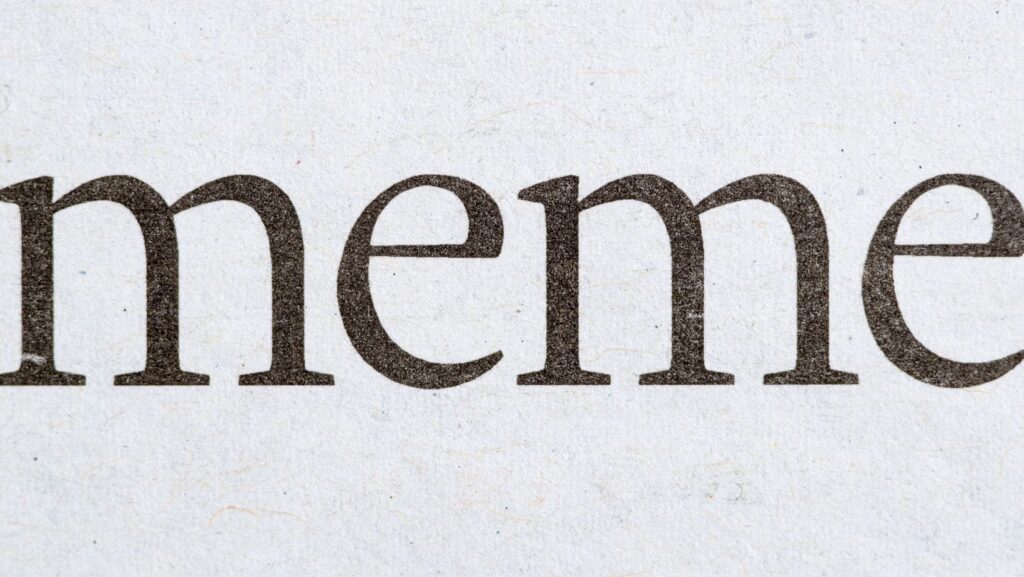In the early days of the internet, even before the development of platforms such as TonyBet, memes were simple. They were just funny images with text. Today, they are a powerful cultural force. Memes shape communication, drive social trends, and influence politics. Their evolution shows how deeply they impact our digital world.
The Birth of Memes
The term “meme” was created by biologist Richard Dawkins in 1976. In his book The Selfish Gene, he described memes as ideas that spread culturally. The internet later gave this concept a digital twist. Early memes like “Dancing Baby” (1996) or “All Your Base Are Belong to Us” were simple but groundbreaking. They showed how humor and shared experiences could cross borders.
These memes used basic tools and spread through email chains and early forums like Usenet. Their simplicity matched the early internet. Yet, they laid the groundwork for the memes we know today.
The Image Macro Era
By the mid-2000s, image macros ruled the internet. Sites like 4chan and Reddit became hubs for creating and sharing memes. Platforms like Know Your Meme tracked their origins. Memes like “I Can Has Cheezburger?” and “Success Kid” showed how a simple image with bold text could connect with people worldwide.
This era proved the power of relatability. Memes were no longer just jokes for small online groups. They became a universal way to share emotions, ideas, and humor. Social media platforms like Facebook and Twitter helped memes spread even faster, cementing their place in digital culture.
Memes as Complex Cultural Artifacts
As the internet grew, memes changed too. They became more than just funny images. Memes started to reflect societal trends, politics, and generational shifts. Platforms like Tumblr and Instagram turned memes into a mix of art and commentary. Memes like “Distracted Boyfriend” and “Woman Yelling at a Cat” became blank canvases for endless creativity and new meanings.

Memes also began shaping cultural identity. Subcultures like “Weird Twitter” and TikTok created memes tied to specific styles, ideas, and aesthetics. Memes like “Shrek is Love, Shrek is Life” and “Deep Fried Memes” embraced irony, absurdism, and meta-humor. They captured the disillusionment of millennials and Gen Z with traditional norms.
Memes in the Age of Virality
The rise of short-form platforms like Vine and TikTok changed memes forever. Memes became more dynamic, using video and sound. Dance challenges and sound remixes grew popular. These memes weren’t just watched—they invited people to join in, creating a sense of community.
Virality defined modern memes. Memes like “Gangnam Style” and the “Harlem Shake” broke out of the internet. They influenced music, fashion, and even advertising. This showed how memes could shape not just online trends but real-world culture and behavior too.
The Political and Social Impact of Memes
In the 2010s, memes became more than just jokes. They turned into tools for political and social influence. The 2016 U.S. presidential election showed this change. Memes played a key role in campaigns and spreading misinformation. Platforms like Twitter and Facebook were filled with political memes, from satire to propaganda.
Memes also became tools for activism. Movements like Black Lives Matter and climate change advocacy used memes to spread messages and rally support. Their visual and emotional power made them effective for raising awareness and sparking engagement.
The Future of Memes
The evolution of memes is still ongoing. New technologies like artificial intelligence are changing how memes are made. AI can now create more advanced images, text, and videos than ever. Augmented and virtual reality may soon turn memes into fully immersive experiences.

Memes are also becoming more diverse and localized. Platforms like TikTok and regional meme pages on Instagram or Facebook highlight specific cultures and languages. This challenges the idea of a universal, one-size-fits-all meme.
More than a Joke
Memes began as simple image macros. Now, they are complex cultural phenomena. They have grown from jokes into tools for communication, commentary, and influence. Memes shape how we see and engage with the world.
As the digital world evolves, memes will keep adapting. They will continue to reflect and shape the changing dynamics of culture and society.

